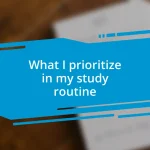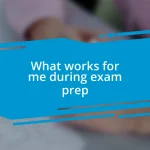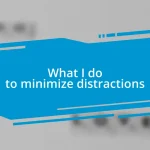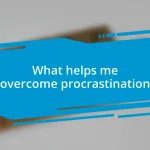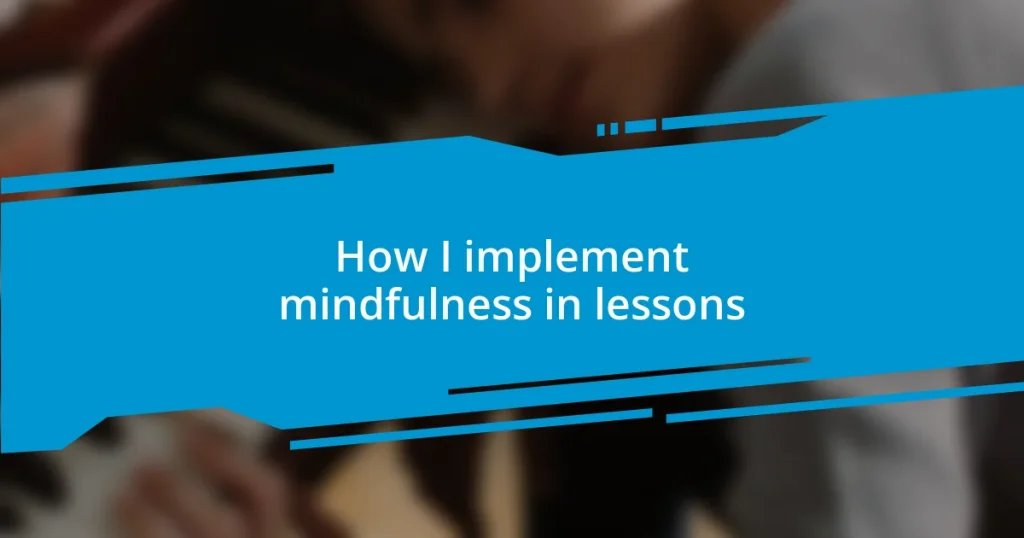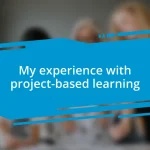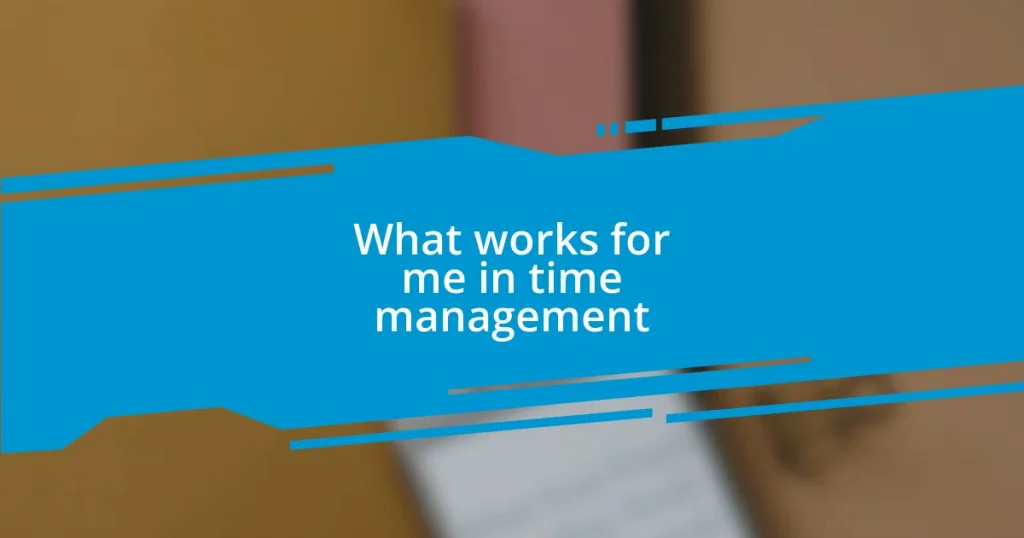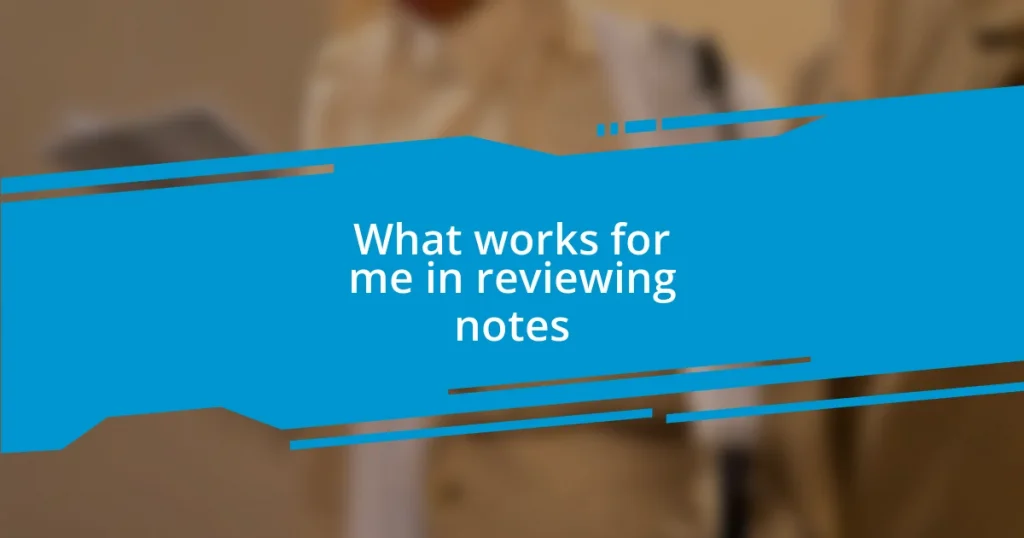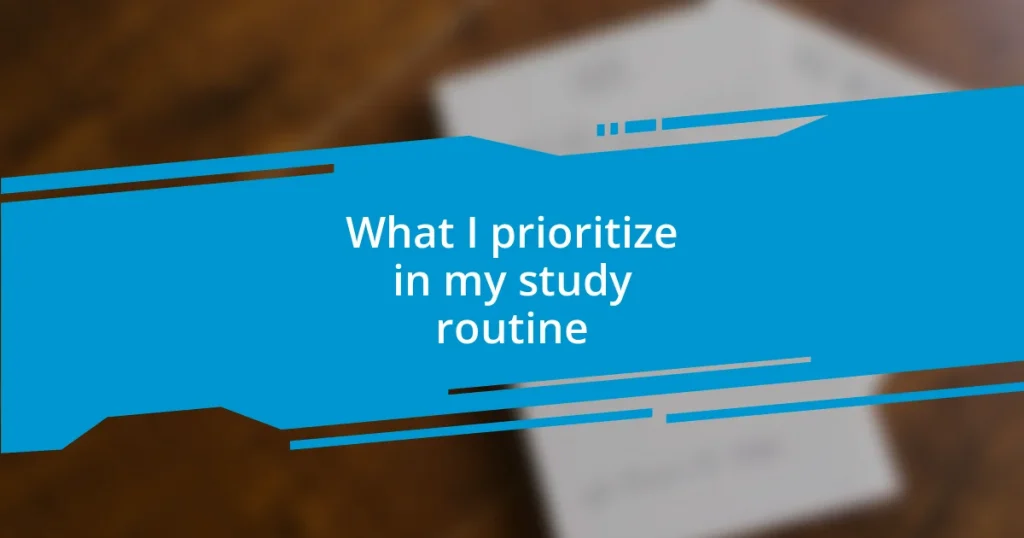Key takeaways:
- Mindfulness in education enhances emotional intelligence, focus, and collaboration among students, positively impacting both academic and social aspects of learning.
- Practical mindfulness techniques, such as mindful breathing and gratitude circles, create a supportive and engaging classroom environment that promotes well-being.
- Measuring the impact of mindfulness involves both qualitative observations and quantitative data, showing improvements in student behavior, academic performance, and overall classroom dynamics.
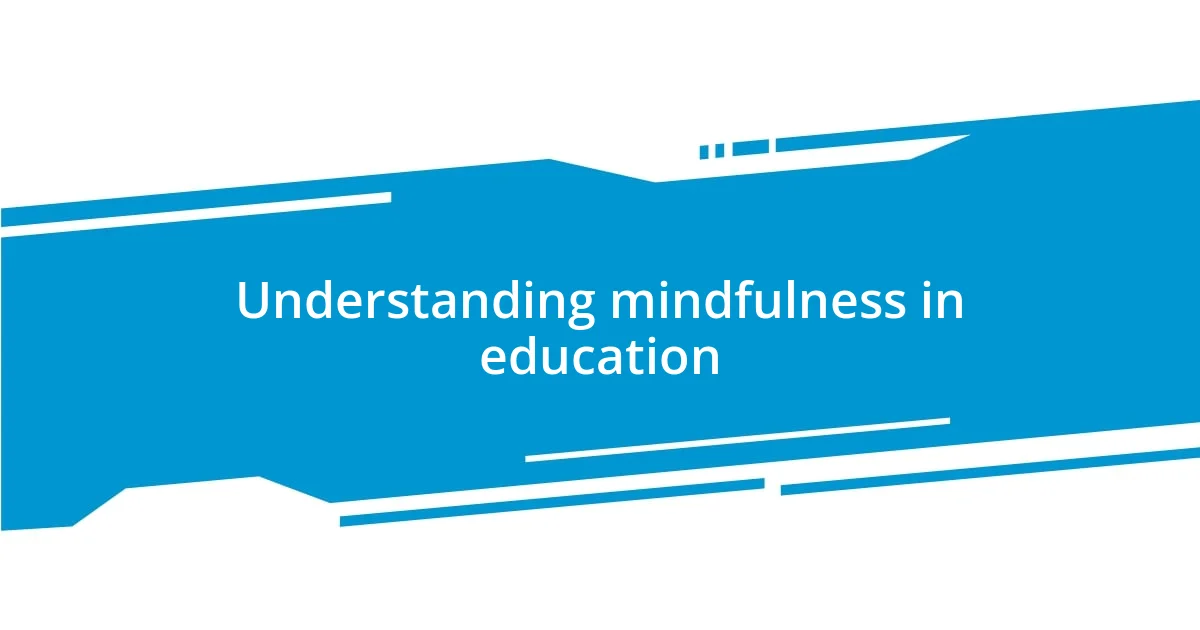
Understanding mindfulness in education
Mindfulness in education is really about being present—both for students and teachers. I remember a time in my classroom when I led a simple breathing exercise before a hectic math test. The transformation in the room was palpable; students shifted from anxious and restless to calm and focused. It made me realize how powerful these moments of stillness can be in a learning environment.
When I think about the demands on today’s students, I can’t help but wonder: How often do they have the space to pause and reflect amidst their busy schedules? My observations tell me that incorporating mindfulness practices helps create a supportive atmosphere. It encourages students to check in with their feelings, fostering emotional intelligence, which is essential for effective learning.
Moreover, mindfulness isn’t just a tool for concentration; it cultivates empathy and understanding among peers. I once facilitated a group discussion after a mindfulness activity, and the depth of conversation that emerged astounded me. Students shared their thoughts and vulnerabilities—not as competitors, but as a community. This sense of connection underscores the profound impact mindfulness can have not just academically but socially as well.
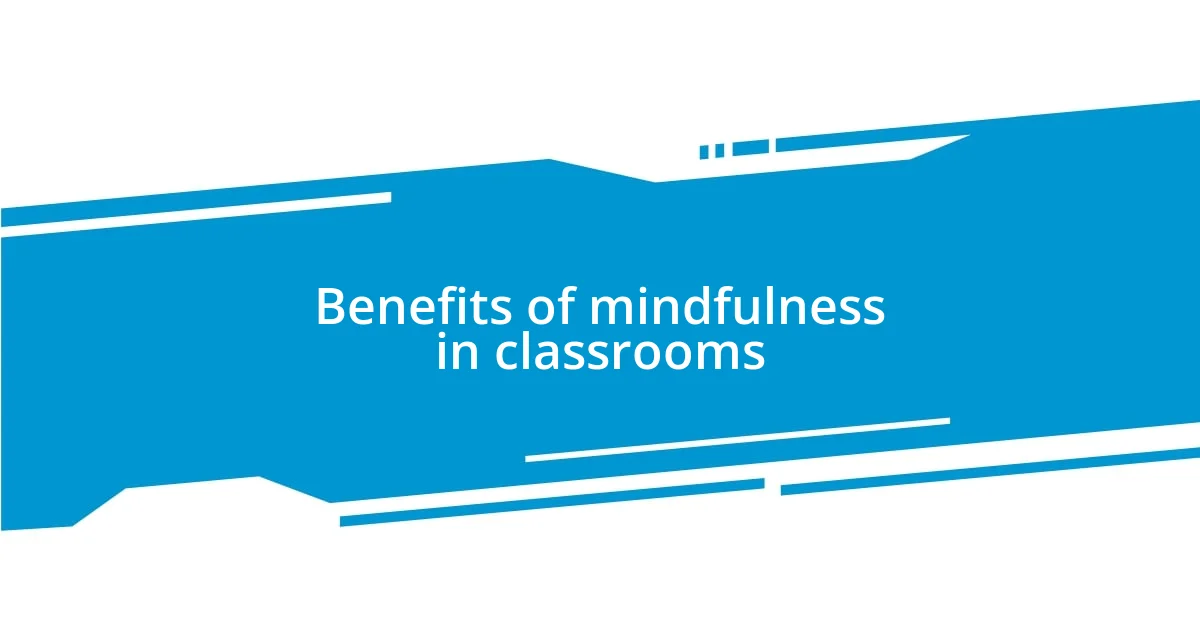
Benefits of mindfulness in classrooms
Mindfulness in classrooms delivers remarkable benefits that go beyond mere academic gains. For instance, I vividly recall implementing a short mindfulness moment during a particularly heated group project. After just a few minutes of guided visualization, students returned to their tasks with a refreshed sense of collaboration. There’s something about taking a brief pause that allows young minds to reset and re-engage with creativity and openness.
Another profound benefit I’ve noticed is the significant enhancement in student focus and retention. In one session, we began by sharing our experiences of anxiety and distraction. This simple practice of acknowledging their feelings transformed the energy in the room. I can genuinely say that the students who practiced mindfulness were not only more attentive but also absorbed information more effectively, leading to improved performance—both in assessments and class discussions.
Finally, mindfulness fosters a greater sense of well-being among students. I’ve seen how regular mindfulness sessions can help alleviate stress, allowing them to approach challenges with a more positive mindset. Just last week, a student mentioned how deep breathing helped her navigate a tough day. This feedback reinforces my belief that when students learn to manage their emotions, their overall school experience becomes more fulfilling and enriching.
| Benefit | Description |
|---|---|
| Enhanced Focus | Mindfulness practices improve students’ attention spans and information retention. |
| Emotional Regulation | Students learn to manage their emotions better, resulting in lower anxiety levels. |
| Improved Collaboration | Mindfulness fosters a supportive atmosphere, enhancing teamwork and communication. |
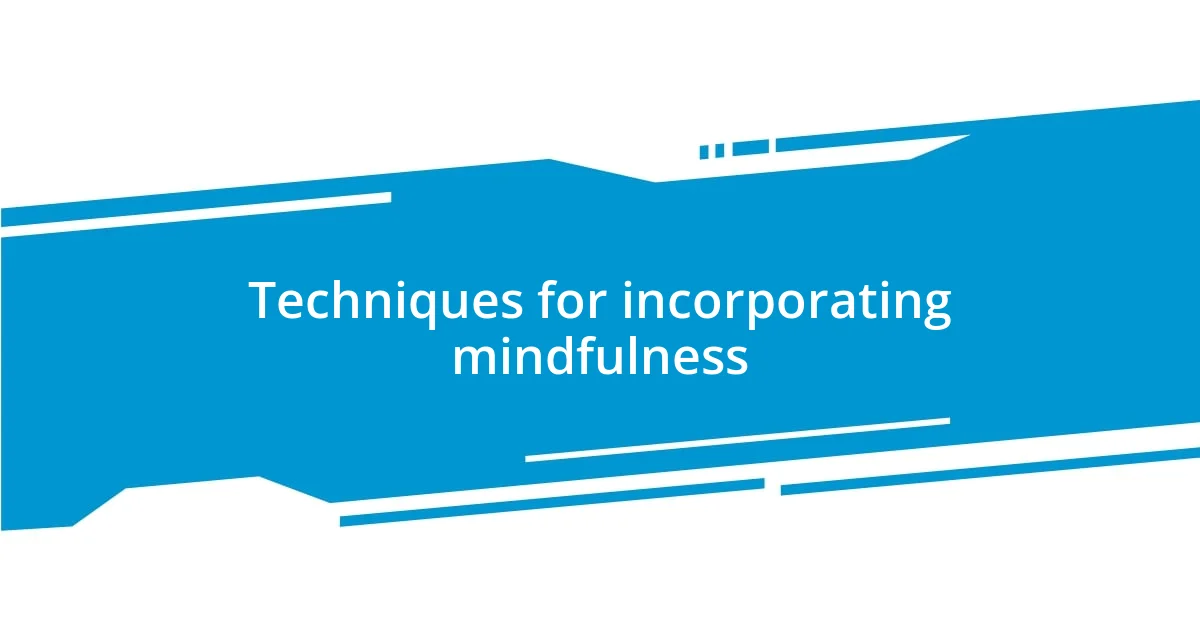
Techniques for incorporating mindfulness
Incorporating mindfulness into lessons involves practical techniques that I’ve found incredibly effective. One memorable strategy was starting classes with a minute of mindful breathing. I distinctly recall the difference it made one morning when my students walked in filled with the jitters of an upcoming presentation. As they focused on their breath, I noticed their shoulders visibly drop, and their anxious energy transformed into a calm readiness that set a positive tone for the entire lesson.
Here are some techniques I’ve successfully implemented:
- Mindful Breathing: A simple practice before lessons, allowing students to focus their minds and reduce anxiety.
- Guided Visualization: Last year, I led my students on a mini “journey” to a peaceful place, which sparked lively discussions about their experiences afterward.
- Reflection Time: I encourage students to journal their thoughts post-lesson, helping them process their learning and emotions.
- Mindfulness Prompts: I use short prompts throughout the day, such as “Notice how you are feeling right now,” to encourage ongoing self-awareness.
- Movement Breaks: Integrating brief movement sessions, like stretching or simple yoga poses, has significantly boosted student engagement and mental clarity.
Each of these mindfulness techniques has not only enriched my teaching practice but also deepened the connections among my students, fostering a culture of compassion and understanding. It’s truly rewarding to witness how these practices encourage my students to become more mindful of themselves and each other.
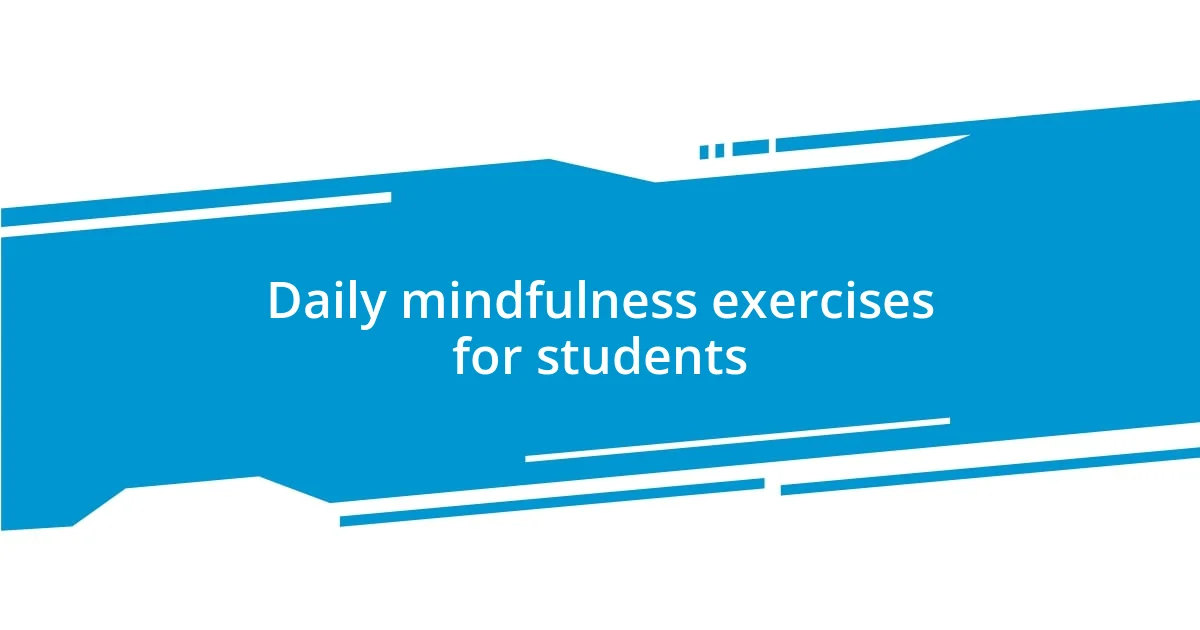
Daily mindfulness exercises for students
Practicing daily mindfulness exercises can be a game-changer for students. One technique I’ve found particularly effective is the “Gratitude Circle,” where each student shares one thing they’re grateful for before class starts. I remember a day when a student expressed gratitude for their supportive friends. That simple sharing created an atmosphere of positivity that carried through the lesson, making it easier for everyone to engage and collaborate.
Another exercise worth considering is the “Feeling Check-In.” At the beginning of each week, I ask students to jot down how they’re feeling on a scale from one to ten. Initially, they looked puzzled, but as we made it a routine, I noticed they started to be more vocal about their emotions. Once, a student who usually remained silent opened up about feeling overwhelmed with work. It became an important moment where peers supported each other, highlighting the power of emotional awareness in a classroom setting.
Lastly, I encourage “Mindful Minutes,” where, during a lesson, we pause for just a minute to focus solely on our breathing. I often see students closing their eyes, deepening their breaths, and witnessing the change in their expressions. It’s incredible how such a short break helps them reset their minds. I’ve seen it turn chaotic mornings into moments of clarity. Isn’t it fascinating how a minute can make such a difference?
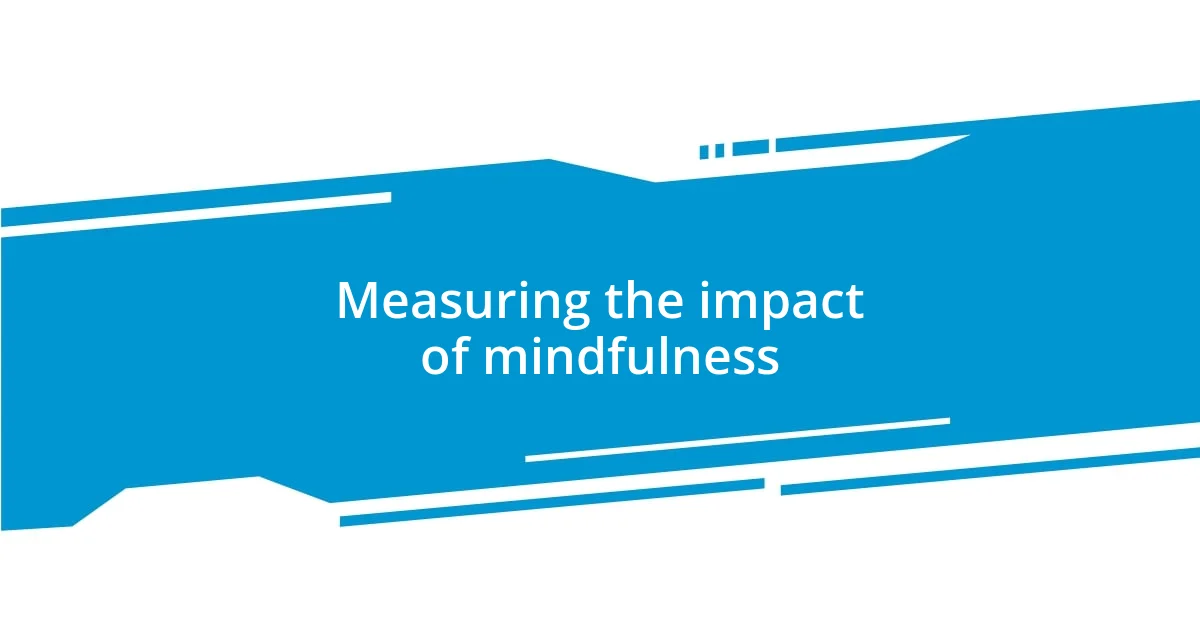
Measuring the impact of mindfulness
Measuring the impact of mindfulness in the classroom is a crucial step to understand its effectiveness. I’ve often turned to simple surveys or reflection sessions to gauge how my students feel about their experience with mindfulness practices. After implementing the “Gratitude Circle,” I noticed not just happier faces but also improved collaboration in group activities. Isn’t it rewarding when you can see the benefits unfold right before your eyes?
Another method I’ve found invaluable is tracking student behaviors over time. For instance, implementing the “Feeling Check-In” led to a marked decrease in anxieties and outbursts. It was striking to see how a student once known for frequent frustrations began sharing their feelings openly. Doesn’t it feel gratifying to witness such transformations, knowing your small efforts are part of that journey?
Quantitative data also plays a role in measuring mindfulness impact. I maintained a record of academic performance and attentive engagement during lessons, noticing a positive correlation with mindfulness exercises. It felt incredible when test results reflected not just academic growth but a more cohesive classroom spirit. How often do we consider that mindful practices can enhance both emotional well-being and educational outcomes?
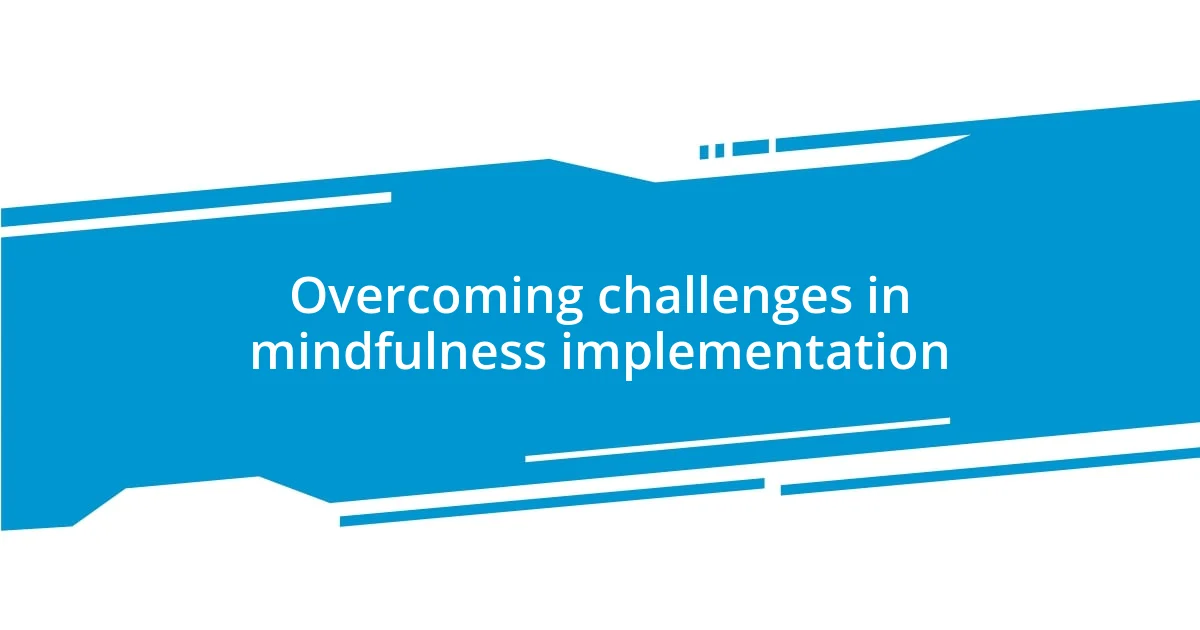
Overcoming challenges in mindfulness implementation
When implementing mindfulness in lessons, one of the biggest hurdles can be student resistance. I recall a day when I introduced a new mindfulness exercise, and some students rolled their eyes, skeptical about its benefits. It took a few sessions, but gradually, I noticed a shift; now, they often remind each other to take mindful breaks. How incredible is it that persistence can turn skepticism into enthusiasm?
Another challenge is finding the right balance between mindfulness and lesson delivery. I was once caught in a tight schedule, thinking I couldn’t squeeze in mindfulness without sacrificing content. However, I learned that integrating short mindfulness exercises actually enhanced focus during lessons. For instance, a simple “Mindful Minute” before transitioning topics helped students absorb information better. Isn’t it amazing how a small mindful pause can lead to deeper understanding?
Finally, maintaining consistency in mindfulness practice is often easier said than done. I’ve experienced weeks where chaos took over, and mindfulness slipped through the cracks. However, I realized that even a fleeting moment of mindfulness can still have an impact, like using a quiet moment while waiting for students to settle. It’s in those little acts that I found resilience and flexibility often go hand-in-hand with fostering a mindful classroom. Isn’t that a comforting thought?



